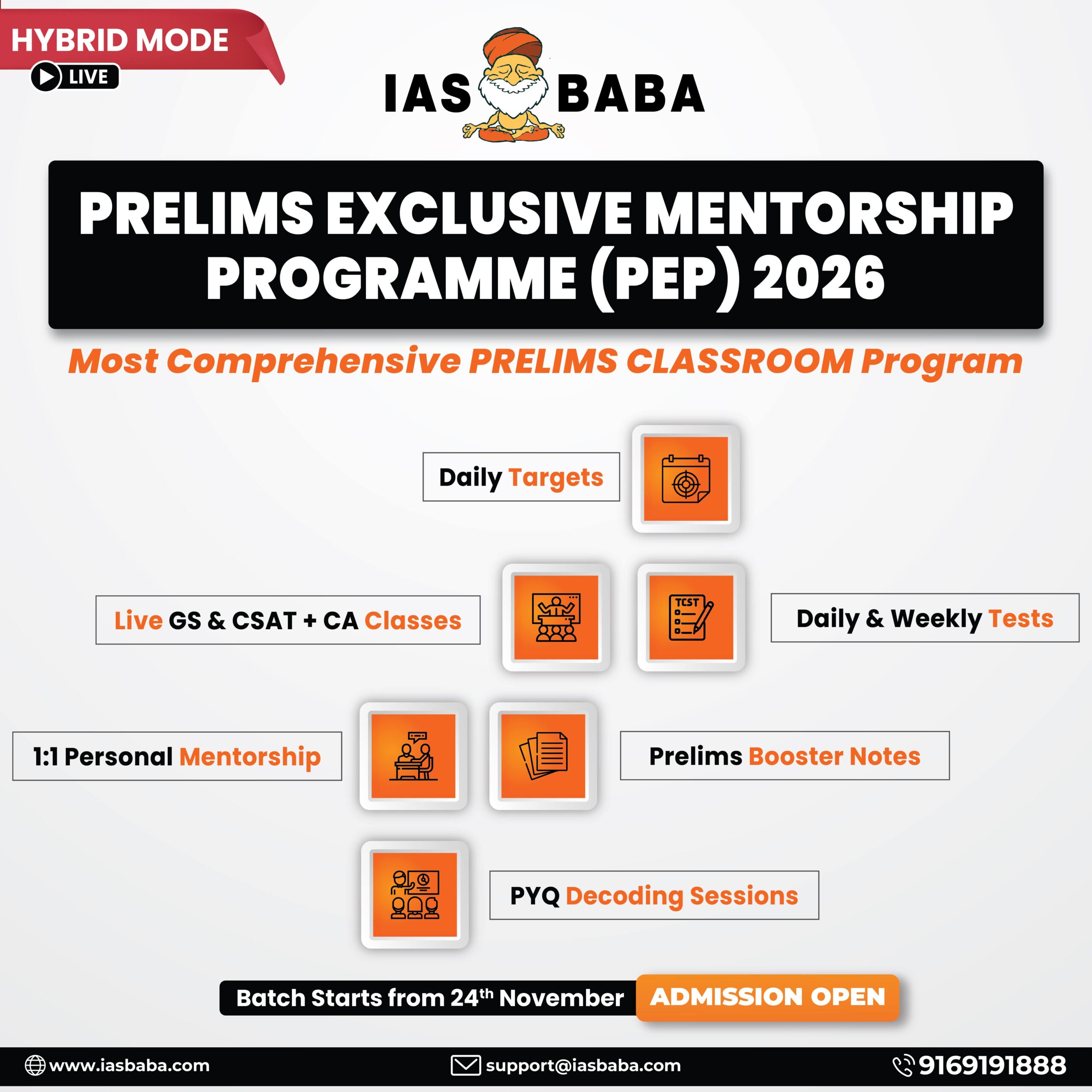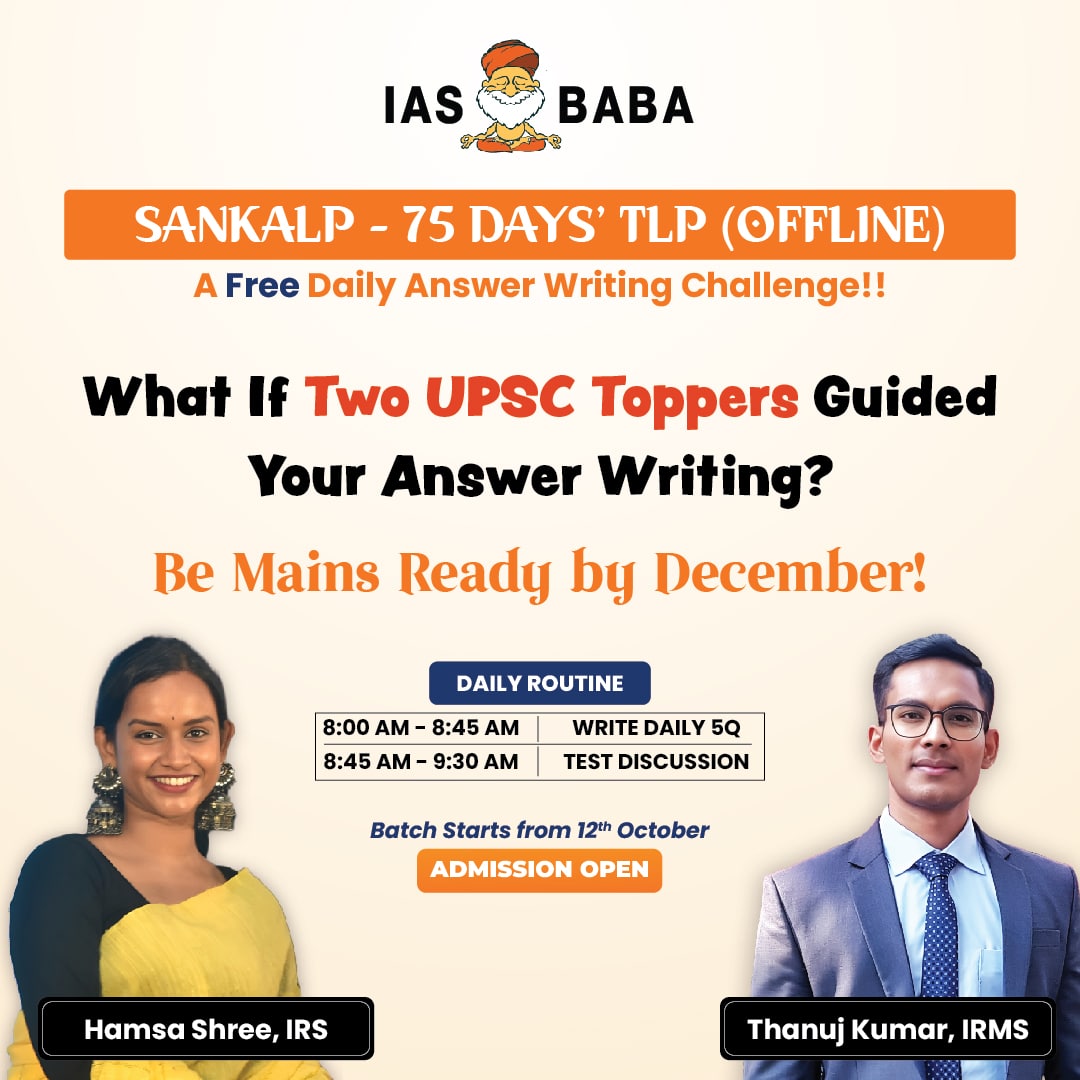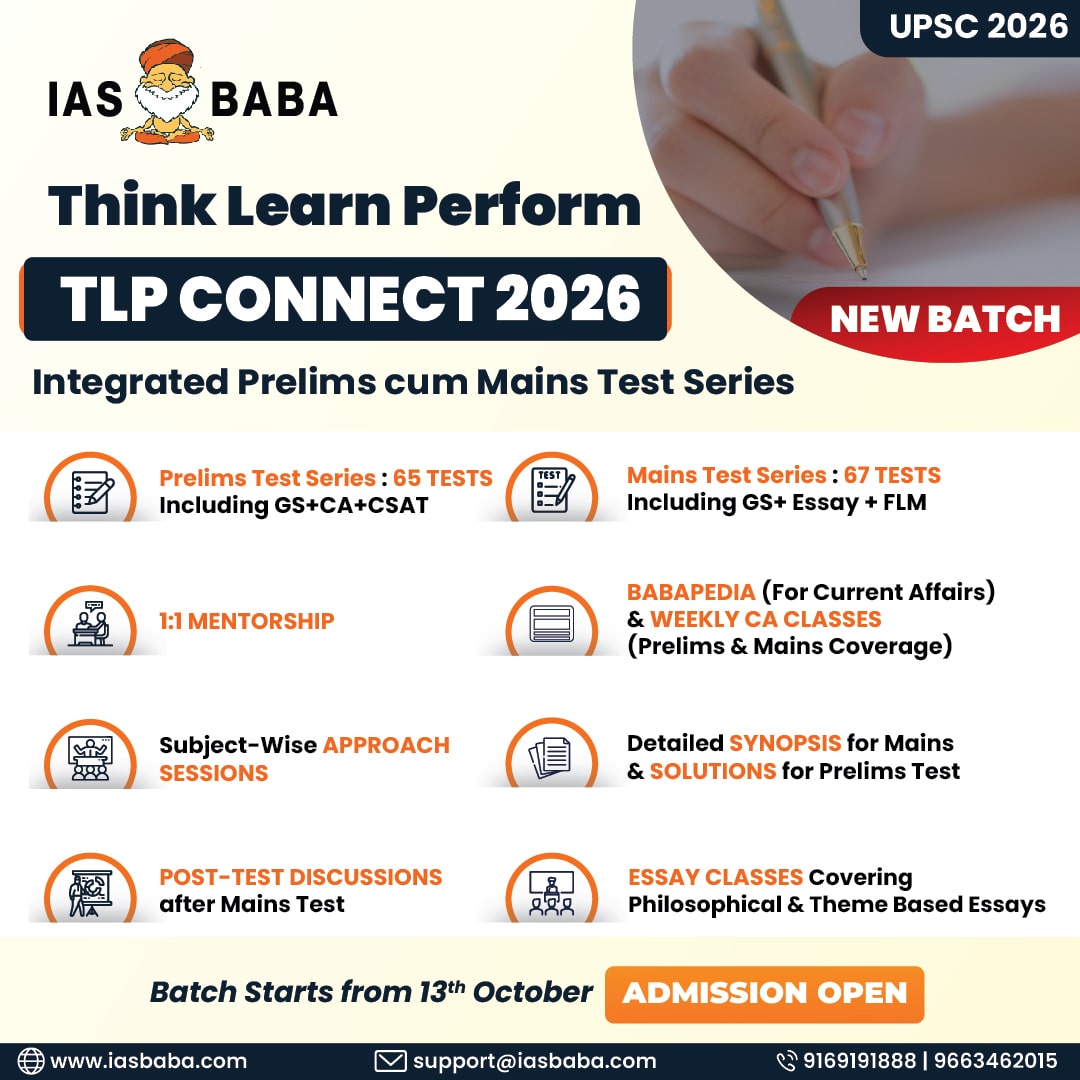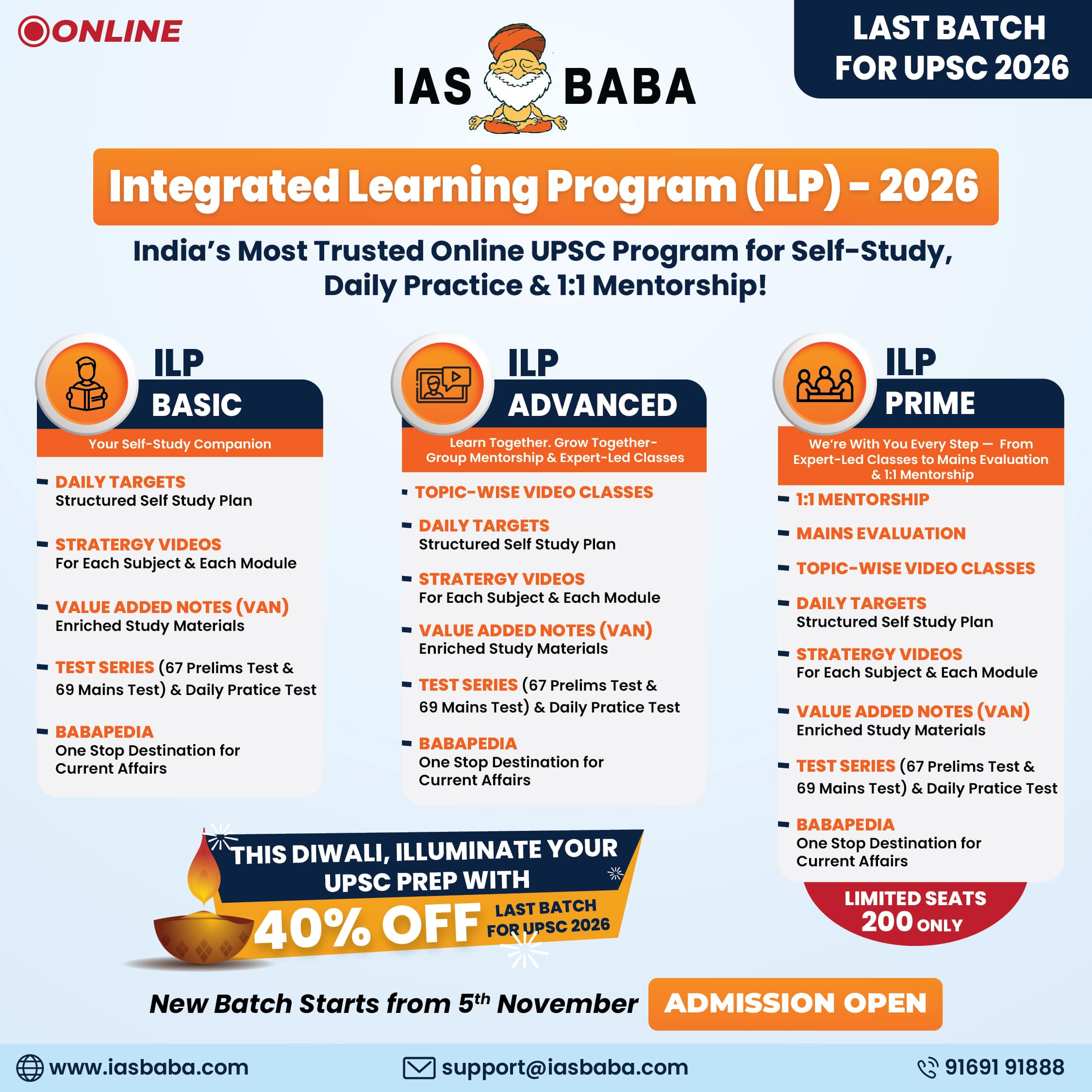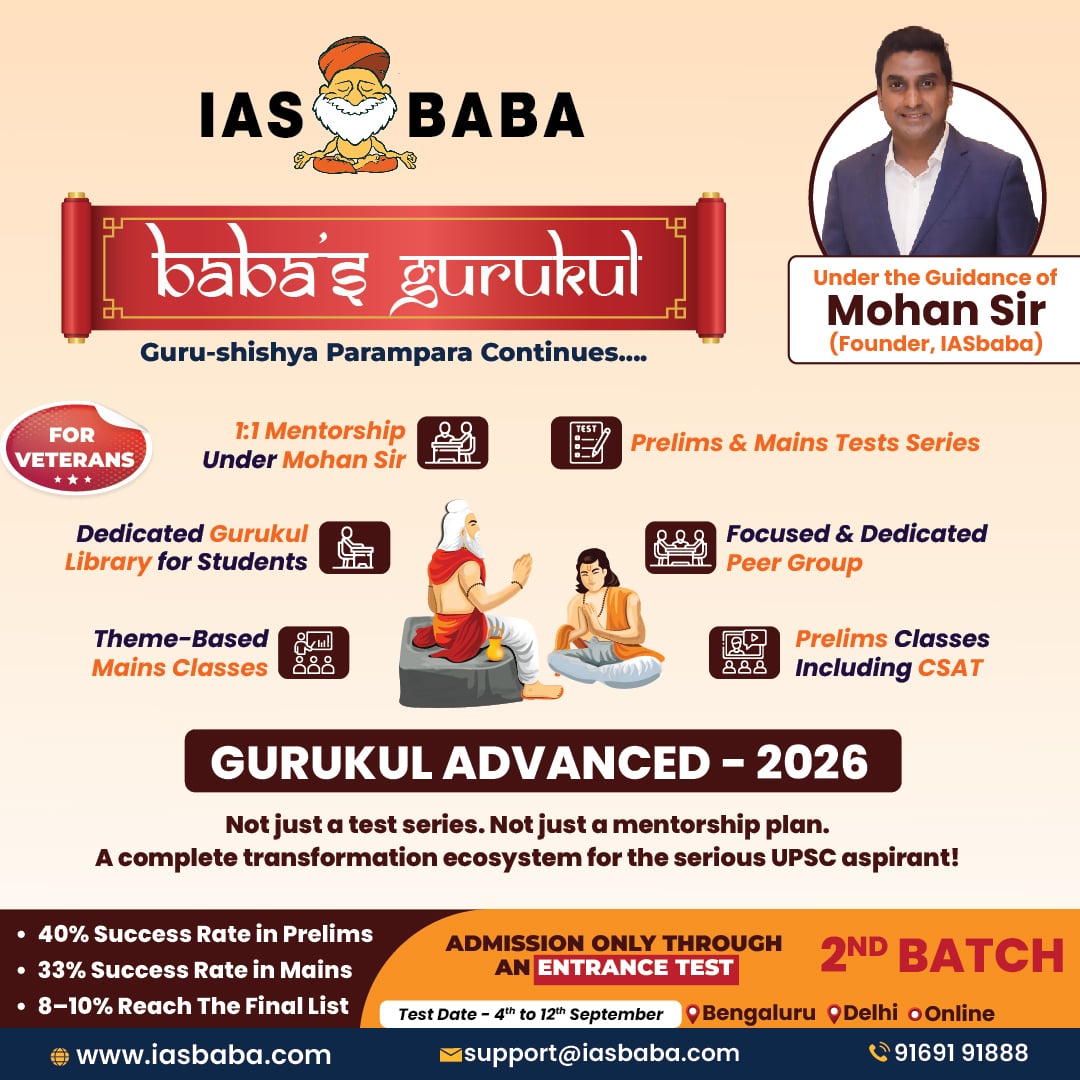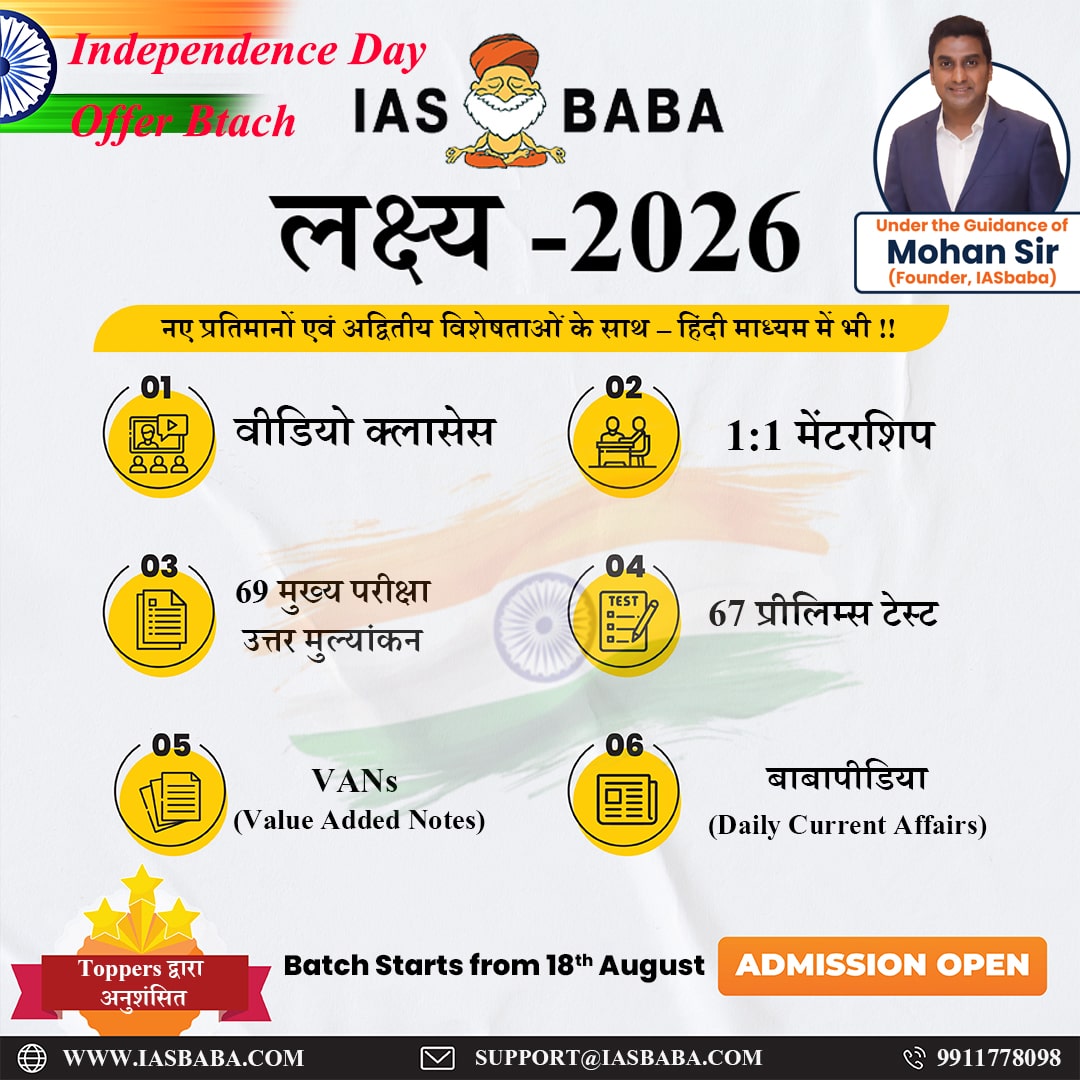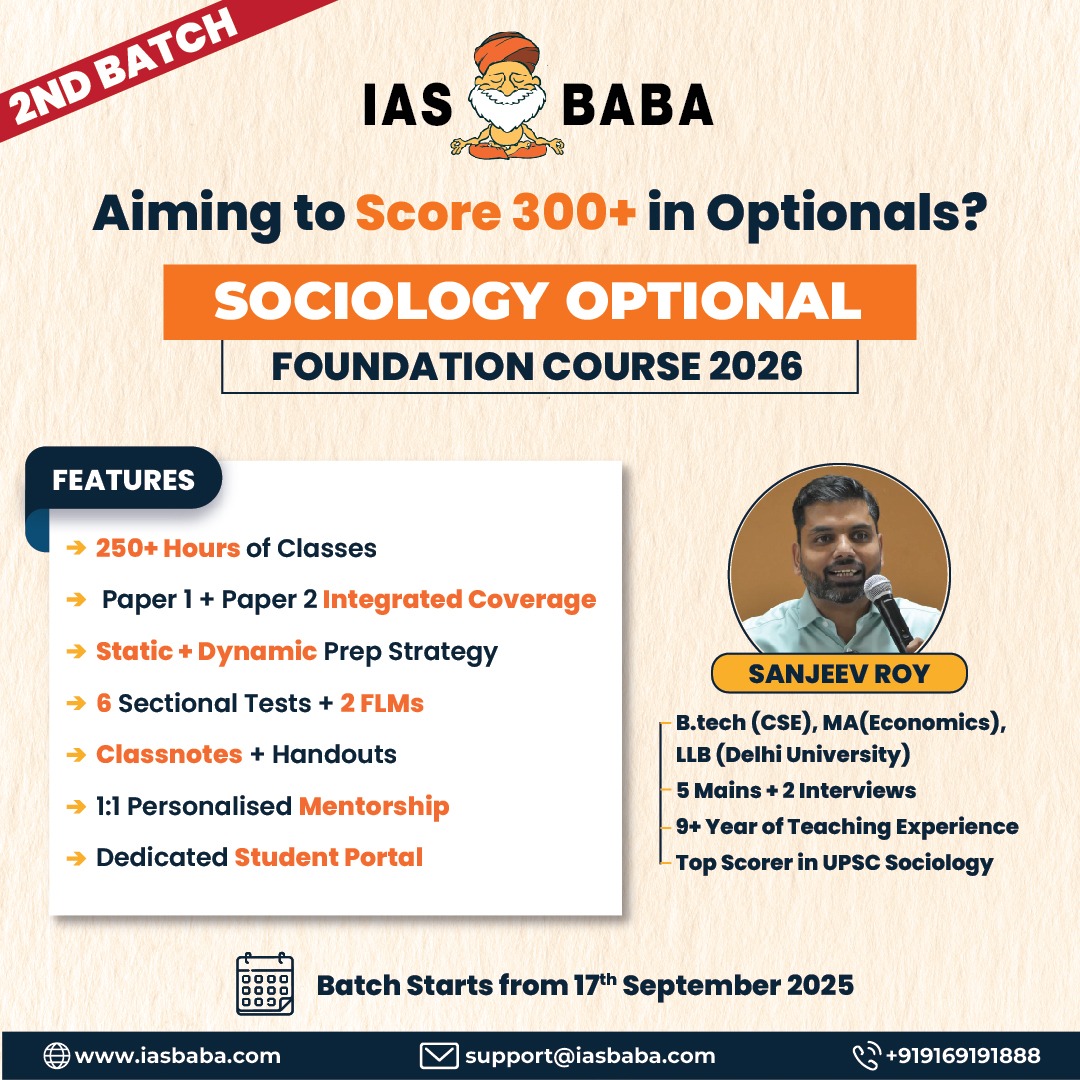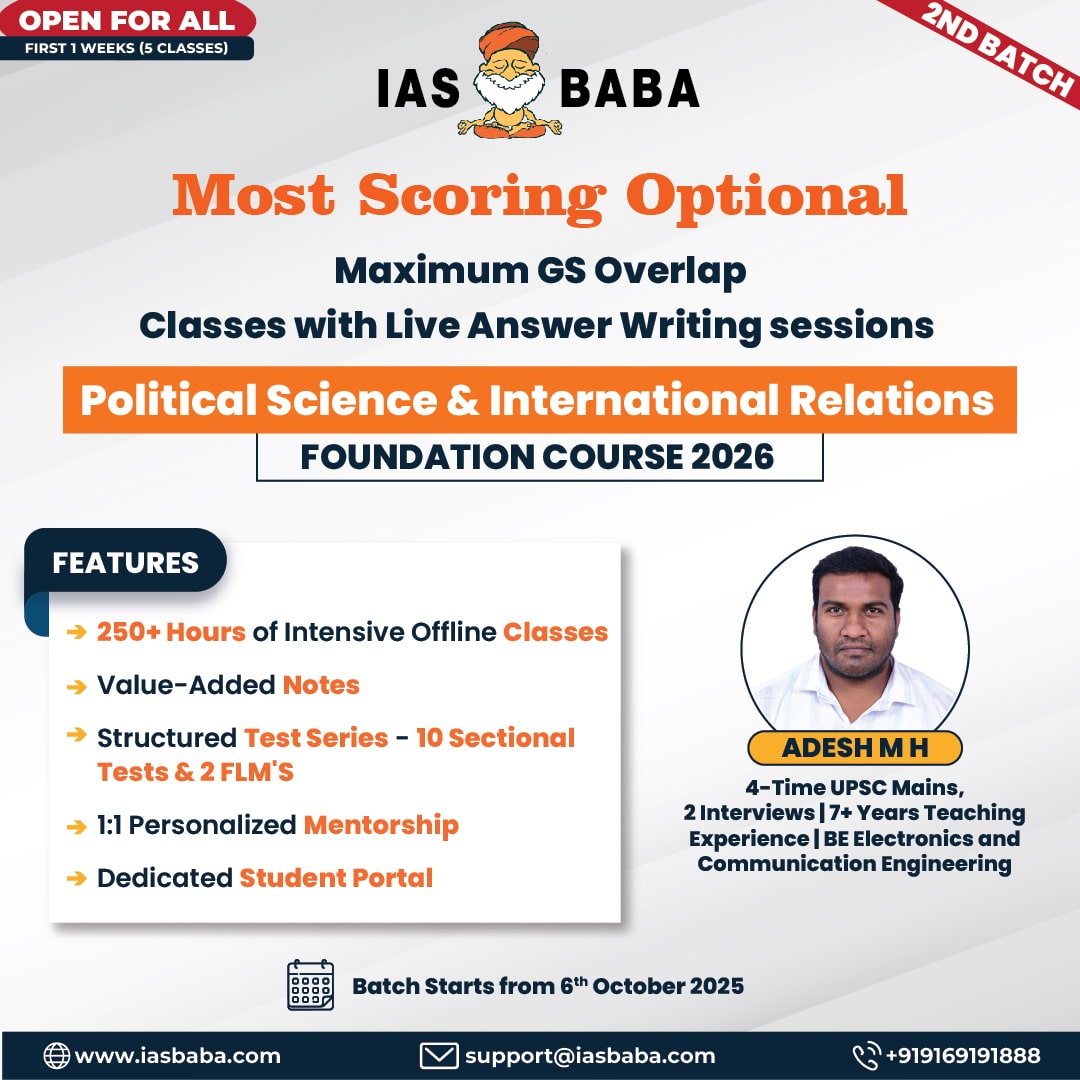IASbaba's Daily Current Affairs Analysis
Archives
(PRELIMS & MAINS Focus)
Category: INTERNATIONAL
Context: The 2025 Breakthrough Prize in Fundamental Physics was awarded to 13,508 physicists across four collaborative projects at CERN, the European particle physics laboratory near Geneva, Switzerland.
Decoding the context: The award was announced on April 5th as part of the 11th annual Breakthrough Prizes. Six prizes worth $3 million each were announced in Life Sciences, Mathematics and Fundamental Physics.
Learning Corner:
- The Breakthrough Prize is one of the most prestigious awards in science, often referred to as the “Oscars of Science”.
- The awards were established in 2013 by Mark Zuckerberg and his wife Priscilla Chan, former Google chief Sergey Brin, genomics company 23&Me founder Anne Wojcicki, and tech investor couple Yuri and Julia Milner to recognize groundbreaking achievements in Life Sciences, Fundamental Physics, and Mathematics.
Breakthrough Prize In Life Sciences – The award in this category was given to three groups of scientists:
- Weight-loss drugs : Five scientists — Daniel J. Drucker, Joel Habener, Jens Juul Holst, Lotte Bjerre Knudsen, and Svetlana Mojsov — were awarded a prize for discovering and characterizing the GLP-1 hormone, which led to the development of weight loss and diabetes drugs like Ozempic and Wegovy.
- Multiple Sclerosis treatment : Multiple Sclerosis is an unpredictable chronic disease caused by the immune system attacking the protective sheath that covers nerve fibres of the central nervous system. Alberto Ascherio and Stephen L. Hauser were awarded the Prize for identifying the role of the B-cells of the immune system in Multiple Sclerosis (MS) and devising treatments targeted at the same.
- Gene-editing technologies : David R Liu was awarded the Prize for developing the base editing and prime editing technologies widely used to edit the DNA of living organisms. These are significant as they can edit the DNA without cutting its double helix, and rewrite entire stretches of defective DNA with a corrected version.
Breakthrough Prize In Fundamental Physics
- The Breakthrough Prize in Fundamental Physics was awarded to four collaborations at the Large Hadron Collider (LHC) in CERN – ALICE, ATLAS, CMS and LHCb.
- The LHC is the world’s largest and most powerful particle accelerator, causing protons to accelerate and collide, thus helping scientists study the properties of matter. The four collaborations studied the Higgs boson. The Higgs boson, also known as the ‘God Particle’, is known to impart mass to every other particle.
Source : Indian Express
Category: SCIENCE & TECHNOLOGY
Context: In the ever-changing world of Internet technology, keeping users safe and verifying their identities is important. One of the most important security systems for this is CAPTCHA (Completely Automated Public Turing test to tell Computers and Humans Apart)
Decoding the context: CAPTCHA was introduced in the early 2000s when the internet was flooded with automated bots.
Learning Corner:
- CAPTCHA stands for Completely Automated Public Turing test to tell Computers and Humans Apart. It is a security mechanism used on websites to differentiate between human users and automated bots. The test is designed to be easy for humans to solve but difficult for machines.
- Purpose of CAPTCHA
- Prevent spam (e.g., in comments or registrations)
- Block brute-force attacks
- Protect online polls from manipulation
- Limit abuse of online services (like ticket booking)
Types of CAPTCHA
- Text-based CAPTCHA – Distorted letters/numbers that users must type in.
- Image-based CAPTCHA – Users select images matching a given prompt (e.g., “select all images with traffic lights”).
- Audio CAPTCHA – For visually impaired users; users type spoken words or numbers.
- ReCAPTCHA – Developed by Google. Includes:
- Checkbox (“I’m not a robot”)
- Invisible CAPTCHA (analyzes user behavior without requiring input).
How CAPTCHA Works
- It presents a challenge that is easy for humans but difficult for bots.
- Bots struggle with image recognition, distorted text, and behavioral analysis.
- Advanced CAPTCHAs use AI-based detection to analyze user interactions.
Turing Test
- The Turing Test was proposed by British mathematician and computer scientist Alan Turing in 1950 as a way to assess a machine’s ability to exhibit intelligent behavior indistinguishable from that of a human.
- How It Works
- In the test, a human judge communicates with both a human and a machine (AI) via text-based conversation.
- If the judge cannot reliably determine which one is the machine, the AI is said to have passed the Turing Test, demonstrating human-like intelligence.
- While early computers struggled with this challenge, modern AI systems have made significant progress, creating more natural, human-like conversations.
- Connection Between Turing Test & CAPTCHA – CAPTCHA is actually a reverse Turing Test—instead of a human testing a machine, CAPTCHA is designed so that a machine tests whether the user is human.
Source : The Hindu
Category: HISTORY
Context: Recently, Prime Minister Shri Narendra Modi paid tributes to the great freedom fighter Shyamji Krishna Verma on his death anniversary.
Decoding the context: Shyamji Krishna Verma is remembered as a pioneer of the Indian revolutionary movement in Europe.
Learning Corner:
- Shyamji Krishna Varma was a prominent freedom fighter, lawyer, scholar, and nationalist revolutionary during the Indian independence movement. He was a pioneer of Indian nationalism in Europe.
Key Facts & Contributions
- Born: 4 October 1857, Mandvi, Gujarat (Kutch region)
- Education: Studied Sanskrit and law; later went to Oxford University in England.
- Profession: Barrister; also appointed Diwan of a princely state in India for a short period.
Major Contributions:
- India House (1905, London): Founded India House, a hostel and hub for Indian students and revolutionaries in London. India House Became a center of nationalist and revolutionary activity abroad.
- The Indian Sociologist (1905): Started this monthly journal to promote nationalist ideas and expose British colonial rule. The British government banned its publication for spreading seditious content.
- Support to Revolutionaries:
- Mentored and supported Vinayak Damodar Savarkar, Lala Har Dayal, and Madam Cama.
- Advocated armed revolution against British rule.
- Exile: Faced persecution in Britain; moved to Paris and later Switzerland, continuing his work in exile.
- Died in Geneva, Switzerland in 1930.
- In 2003, his ashes were brought back to India by the Government of Gujarat and enshrined at Kranti Teerth, Mandvi (Kutch).
Source : PIB
Category: INTERNATIONAL
Context: Lok Sabha Speaker Om Birla, during a series of bilateral meetings held on the sidelines of the 150th Inter-Parliamentary Union (IPU) Assembly in Tashkent, highlighted the deep-rooted historical and cultural ties between India and Uzbekistan.
Decoding the context: Birla is leading the Indian Parliamentary Delegation (IPD) for the 150th Inter-Parliamentary Union (IPU) Summit.
Learning Corner:
- The Inter-Parliamentary Union (IPU) is a global organization that fosters cooperation among national parliaments to promote peace, democracy, and sustainable development.
- Established in 1889, it is the oldest international parliamentary organization and plays a crucial role in parliamentary diplomacy.
- Slogan is: For democracy. For everyone.
- Key Facts About IPU
- Headquarters: Geneva, Switzerland.
- Members: 180 national parliaments and 15 associate members.
- Motto: “For democracy. For everyone.”
- Core Objectives:
- Strengthening democratic governance and parliamentary institutions.
- Promoting gender equality and youth participation in politics.
- Defending human rights of parliamentarians worldwide.
- Supporting peace-building efforts through parliamentary dialogue.
- Structure of IPU
- IPU Assembly: The main decision-making forum where global political and social issues are discussed.
- Governing Council: Sets policies and elects the Executive Committee.
- Executive Committee: Oversees operations and administration.
- Standing Committees: Focus on key themes like peace, democracy, development, and cooperation
Source : DD News
Category: ECONOMY
Context: India’s cotton economy isn’t in great shape. This, despite the advantage the country has as a producer of the natural fibre and its textile exports facing only 27% duty – as against China’s 54%, Vietnam’s 46%, Bangladesh’s 37%, Indonesia’s 32% and Sri Lanka’s 44% – under US President Donald Trump’s “reciprocal tariff” policy.
Decoding the context: The pink bollworm has brought down India’s cotton production by a quarter in the last decade. While a few seed companies have developed new genetically modified hybrids resistant to the dreaded insect pest, regulatory barriers are coming in the way of their commercialisation.

Learning Corner:
- India’s cotton output in the 2024-25 marketing year (October-September) is projected at just over 294 lakh bales (lb; 1 lb=170 kg), the lowest since the 290 lb of 2008-09. Production has been on a declining path since the peak of 398 lb in 2013-14.
- The cultivation of genetically modified (GM) cotton hybrids – incorporating alien genes isolated from a soil bacterium, Bacillus thuringiensis or Bt – had led to not only a near-trebling of production (from 136 lb to 398 lb), but also a 139-fold jump in exports (from 0.8 lb to 117 lb), between 2002-03 and 2013-14.
- The above production slide, and India turning from a large cotton exporter to a net importer, is mainly courtesy of the pink bollworm (PBW).
About pink bollworm (PBW)
- The pink bollworm (PBW), known among farmers as gulabi sundhi, damages the cotton crop by burrowing its larvae into the cotton bolls. This results in the lint being cut and stained, making it unfit for use.
- The GM cotton now grown in India have two Bt genes, ‘cry1Ac’ and ‘cry2Ab’, coding for proteins toxic to the American bollworm, spotted bollworm and cotton leafworm pests. The double-gene hybrids initially provided some protection against the PBW too, but that effectiveness has dissipated over time.
- The reason for it is that the PBW is a monophagous pest, which feeds exclusively on cotton. This is unlike the other three pests that are polyphagous and survive on multiple host crops.
- Being monophagous enabled the PBW larvae to gradually build resistance to the toxins from the existing Bt cotton hybrids. The PBW population that became resistant from continuously feeding on these plants eventually overtook and replaced the ones that were susceptible.
- The pest’s short life cycle (25-35 days from egg laying to adult moth stage), allowing it to complete at least 3-4 generations in a single crop season of 180-270 days, further accelerated the resistance breakdown process.
Source : Indian Express
Practice MCQs
Q1. With reference to Shyamji Krishna Varma, consider the following statements:
- He founded the India House in London to support Indian students and promote nationalist ideas.
- He started the journal The Indian Sociologist to propagate revolutionary thought against British rule.
- He was associated with the Swadeshi Movement led by Bal Gangadhar Tilak in India.
- His ashes were brought back to India and enshrined at Kranti Teerth in Gujarat.
Which of the statements given above are correct?
A. 1, 2 and 3 only
B. 1, 2 and 4 only
C. 2 and 3 only
D. 1, 3 and 4 only
Q2.The Inter-Parliamentary Union (IPU) is best described as:
(a) A UN agency for electoral reforms.
(b) A global organization of national parliaments promoting democratic governance.
(c) An EU body coordinating legislation among member states.
(d) A financial institution supporting parliamentary infrastructure.
Q3.With reference to the recent crisis in India’s cotton economy, consider the following statements:
- The pink bollworm (PBW) is a polyphagous pest that feeds on multiple host crops, including cotton.
- Bt cotton hybrids contain genes from Bacillus thuringiensis that were initially effective against pink bollworm.
- The effectiveness of Bt cotton against PBW has reduced over time due to the pest developing resistance.
- India’s cotton production has remained stable over the last decade despite pest-related challenges.
Which of the statements given above are correct?
A. 1 and 2 only
B. 2 and 3 only
C. 1, 3 and 4 only
D. 2, 3 and 4 only
Comment the answers to the above questions in the comment section below!!
ANSWERS FOR ’ Today’s – Daily Practice MCQs’ will be updated along with tomorrow’s Daily Current Affairs
ANSWERS FOR 7th April – Daily Practice MCQs
Q.1) – c
Q.2) – a
Q.3) – c



